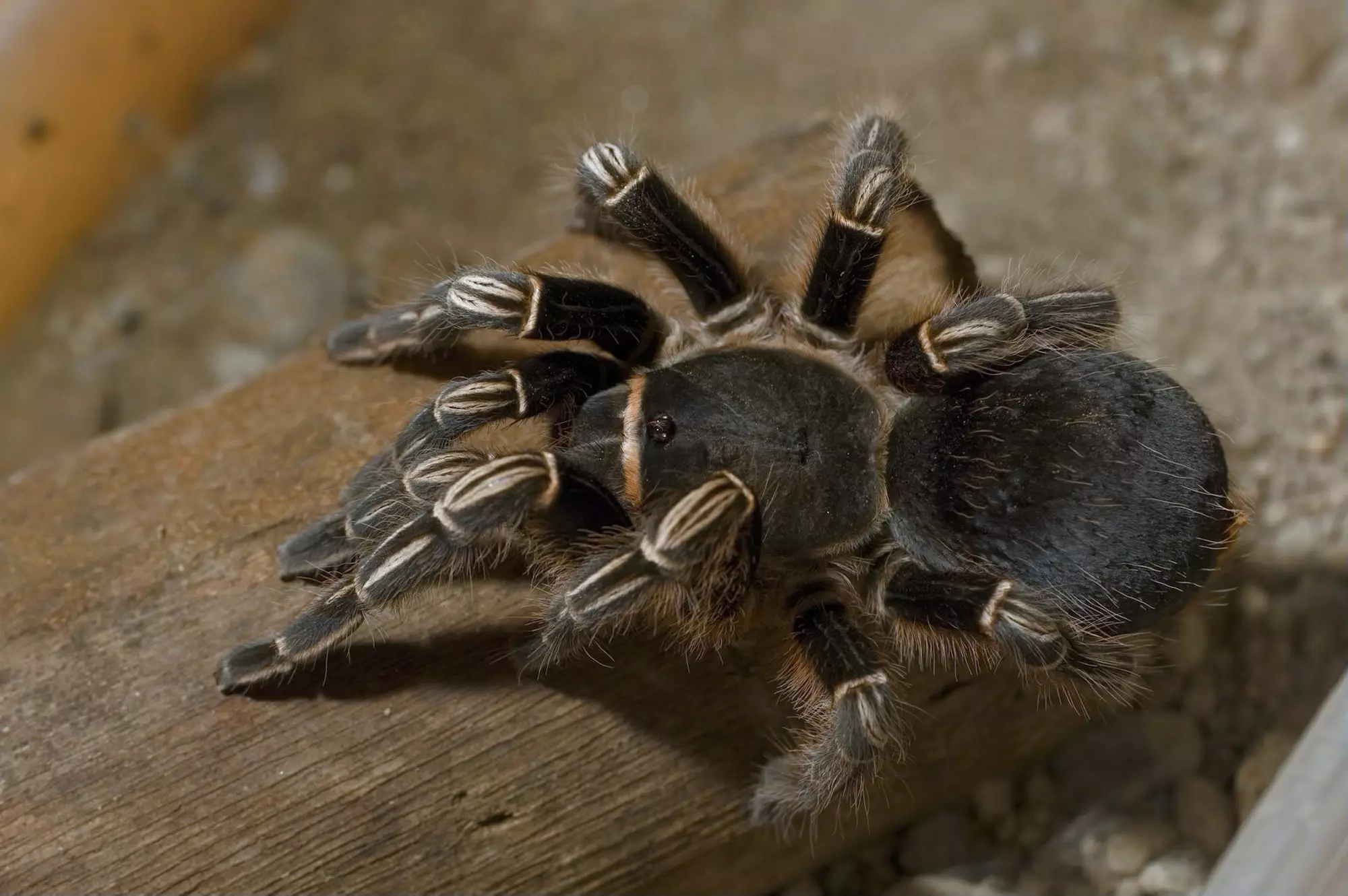The allure of keeping exotic pets is undeniable, especially when it comes to unique species like the Costa Rican zebra tarantula, scientifically known as Aphonopelma seemanni. Commonly referred to as the striped-knee tarantula, this remarkable creature captivates reptile aficionados and arachnid enthusiasts alike. With its striking black body, vivid red hairs, and distinctive white leg stripes, it’s no wonder that this tarantula catches the eye. However, despite its beauty, potential owners should be aware of its specific care requirements and temperament before bringing one into their home.
Costa Rican zebra tarantulas display a combination of docility and skittishness, characteristics that define their handling and interaction with humans. While they are not aggressive by nature and rarely bite unless provoked, their speed can become an issue during handling. An experienced owner is often better suited to manage interactions with this species, as swift movements can lead to injury for both the tarantula and its handler. Understanding their behavior is crucial—these tarantulas tend to flee when startled and can be challenging to catch if they escape their enclosure.
Creating the right living environment is essential to the well-being of a Costa Rican zebra tarantula. An ideal enclosure ranges from a 5 to 10-gallon aquarium, tailored specifically to meet their needs. The dimensions should allow for ample space, with the length being three times the leg span and the width approximately two to three times. The height should be around a foot, providing enough vertical space for climbing, which is crucial for their behavior.
Substrate is another vital component of their habitat. A layer of at least four inches of a blend of peat moss, organic soil, or vermiculite will provide an appropriate foundation. This helps with moisture retention and creates a suitable burrowing environment, important for the tarantula’s natural instincts. Incorporating hides such as hollow logs or cork bark adds a sense of security, promoting a stress-free environment.
The environmental conditions must be closely monitored, as the Costa Rican zebra tarantula thrives in a stable climate. It prefers temperatures between 70 to 85 degrees Fahrenheit and humidity levels around 75 to 80 percent. Owners may need to invest in heat mats to achieve the desired warmth, ensuring that only one side of the enclosure receives additional heat. Adequate humidity can be maintained by monitoring water evaporation and misting as necessary.
Maintaining humidity is critical, but caution must be exercised to avoid over-saturation, which could lead to mold and health issues for the tarantula. Regular water changes in the shallow dish not only provide hydration but also enhance humidity levels, making it vital to ensure the dish is accessible to prevent any drowning incidents.
An essential aspect of caring for a Costa Rican zebra tarantula involves providing a balanced diet. These carnivorous creatures thrive on a diet primarily consisting of live insects like crickets. The feeding frequency varies depending on the spider’s age: adults typically eat once or twice a week, while juveniles may require more frequent meals. After feeding, it’s important to remove any uneaten prey after 24 hours to ensure the health and cleanliness of the habitat.
Beyond insects, some owners may choose to introduce other protein sources, such as pinky mice, but consultation with a veterinarian is advisable for guidance on appropriate feeding schedules and amounts.
While handling is not a necessity for pet tarantulas, some owners may wish to engage with their arachnids more closely. However, caution should be exercised due to their defensive behaviors. When threatened, a Costa Rican zebra tarantula may use its ability to flick barbed hairs from its abdomen, which can irritate human skin and pose a risk to the eyes. Therefore, if you choose to handle your pet, it’s crucial to ensure you are in a safe environment, preferably over a soft surface, should an escape occur.
The lifespan of a Costa Rican zebra tarantula is another aspect to consider. Female tarantulas can live between 15 to 20 years, while males typically have a shorter lifespan of around 5 years. This long-term commitment requires prospective owners to be prepared for the responsibility of housing, feeding, and maintaining a healthy environment for the duration of their pet’s life.
Additionally, routine veterinary care may be necessary. Not all vets are experienced in treating tarantulas, so potential owners should ensure local veterinary resources familiar with exotic pets are accessible.
Owning a Costa Rican zebra tarantula can be a fascinating and enriching experience for those who appreciate the beauty of these unique creatures. However, it comes with responsibilities that require a commitment to providing proper care, a suitable habitat, and a safe approach to handling. While they may not be conventional pets, their quiet nature and minimal space requirements make them suitable companions for knowledgeable enthusiasts. If you are considering adding a Costa Rican zebra tarantula to your collection, make sure to do thorough research and prepare an environment that caters to its needs for a secure and healthy life.

